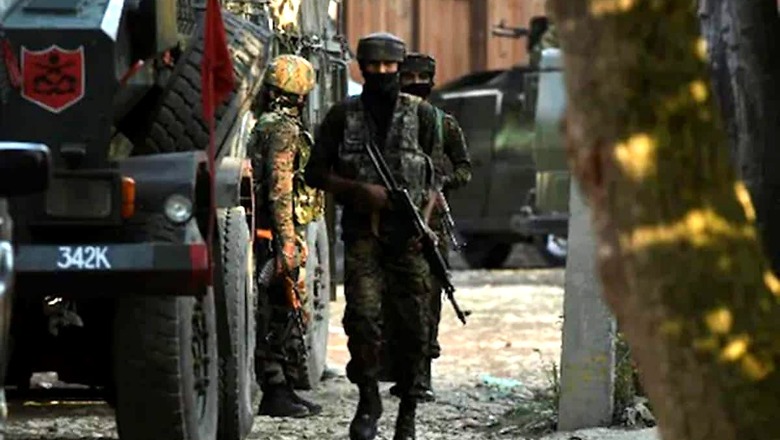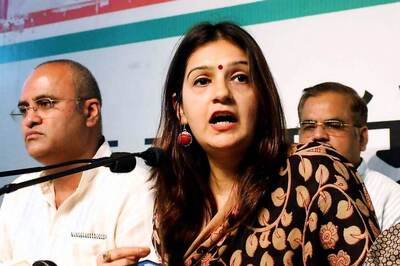
views
That morning, it was snowing, a thin coat of white painting over the grime that carpets Sopore’s Main Chowk market. Abdul Khaliq Halwai had just finished making tea for a small gaggle of Border Security Force soldiers, stationed at the main chowk in Sopore. That’s when, he heard shots—the sounds of an ambush targeting a BSF patrol walking down a lane around the corner—and little pools of red began to blossom.
Furious BSF soldiers are alleged to have shot dead at least 43 civilians, and set off fires which claimed over 350 shops and homes on January 6, 1993. Abdul Khaliq Halwai lived, and set up his tea stall again.
Earlier this week, twenty-eight years after the massacre, loss has again visited Abdul Khaliq Halwai. The tea-seller’s son, long-fugitive Hizbul Mujahideen operative Mehrajuddin Halwai, was shot dead in a controversial firefight, which police say broke out when he snatched a rifle from officers who had arrested him.
The story of the chaiwala’s son who became a lethal terrorist helps understand the long jihad in Kashmir.
For years now, media imagination of Kashmir’s new-generation jihadists has been shaped by figures like Burhan Muzaffar Wani, a charismatic social media propagandist whose killing in a 2016 encounter sparked large-scale violence that evicted the Indian State from large swathes of southern Kashmir for months.
Even though Wani’s social media videos routinely showed him cradling weapons, police records show he did not participate in a single armed operation until his death.
The business of fighting remained, Halwai made no social media appearances, had little education, and was unknown outside his own local community—but was named in at least eight First Information Reports (FIRs) involving nine murders, including the assassination of political activists and attacks on police.
Even though the generation of terrorists who began emerging from 2008 have been cast as highly educated—Zakir Bhat, Wani’s successor, was an engineering college dropout, while others were engaged in doctoral studies or teaching—such stories are outliers. Those of the rank and file like Halwai were part of a prospect-less, frustrated youth cohort, easily seduced by the jihadist call when crisis tore across Kashmir.
A life of struggle:
Born in August, 1985, Halwai grew up in the shadow of the long jihad which erupted across Kashmir at the end of that decade. His home town, Sopore, was among the urban centres worst hit by violence. Long a stronghold of the Jamaat-e-Islami, Kashmir’s largest Islamist group, the city provided a safe haven for groups like the Hizbul Mujahideen. Assassinations, executions and attacks on security forces were routine.
Little in Halwai’s teenage life, though, suggests he was involved in either Islamist politics or drawn to jihadism. Instead, his family sought to give him the best education they could. Halwai made his way through school, graduating from a government-run middle school in Sangrampora, and then the Boys Higher Secondary School, Sopore.
Academic records assembled by police investigators suggest Halwai wasn’t a star student: he failed his first attempt at a high school degree in 2002, but tried again, and graduated in 2003.
Following school, Halwai’s father paid for him to attend the Shah-i-Hamdan Computer Education Centre in Sopore, where he earned a qualification in computer applications and desktop publishing.
The oldest of three siblings, Halwai turned out to be the best-educated. His younger brother, Aziz Ahmad Halwai, dropped out of school in the eight grade, and works at a stationery store; the youngest brother, Wasim Halwai, is a street-side salesman.
In spite of his education, though, Halwai found it hard to escape the grinding poverty he had grown up in. For four years after obtaining his computer qualifications, Halwai worked at a succession off odd jobs. Then, in September 2008, he found a temporary job as an attendant at Srinagar’s Bone and Joint Hospital.
“An entire generation grew up with violence and killing as the norm”, says Observer Research Foundation scholar Khalid Shah. “Education and jobs were supposed to offer a new generation hope, but many ended up getting sucked back in because of the tumultuous events that were soon to break out.”
The road to radicalisation:
Like many of his generation, Halwai appears to have been radicalised in the course of the large-scale, Islamist-led street protests which tore across Kashmir from 2006. That summer, mobs demolished the home of Sabina Bulla—alleged to have run a sex-work ring in Srinagar, while chanting slogans supporting Pakistan and Kashmiri independence. Police stood by.
Then, in the the summer of 2007, the rape-murder of a north Kashmiri teenager provided another opportunity to Syed Ali Shah Geelani and his New Islamist allies. At a June 24, 2007 rally at Langate, the Islamist leader claimed “hundreds of thousands of non-state subjects had been pushed into Kashmir under a long-term plan to crush the Kashmiris.”
Early in 2008, the Islamists mobilised against a career counsellor who, they claimed, had been despatched to Srinagar schools to seduce students into a career of vice. An Anantnag school teacher was also attacked after a video of a group of his students dancing to pop music was circulated.
Finally, later that year, matters came to a head after the state government granted temporary land use rights for facilitating the annual pilgrimage to the Amarnath shrine in south Kashmir. Geelani claimed this was a conspiracy to settle Hindus in the region: the authorities were working “on an agenda of changing the demography of the state”.
“I caution my nation,” he warned, “that if we don’t wake up in time, India and its stooges will succeed and we will be displaced.”
Learning to kill:
Halwai’s introduction to the Hizbul Mujahideen, police records seen by News18 say, came about almost by accident. His neighbour, Hizb operative Javed Mattoo, was injured in a shootout with police in January, 2009. Halwai helped arrange Mattoo’s treatment, using a pseudonym, at the Bone and Joint Hospital. He was introduced to Qayyum Najjar, the Hizb’s north Kashmir region chief, and others in the network.
“For a young man fired up by the Islamist fervour of 2008,” a police officer familiar with the case told News18, “becoming a jihadist probably seemed much more attractive than working a dead-end job”
Few young Kashmiris, police records suggest, actually joined the jihadist movement during this period: in 2009, there were some 75 recruits, a number which fell to 54 in 2010, 23 in 2011, 21 in 2012 and just 16 in 2014.
Lacking weapons and training, moreover—the consequence of diminished support from Pakistan’s intelligence services—the jihadists focussed on developing local support through propaganda operations, rather than armed operations.
From 2013, though, the Hizb—often operating alongside other groups, like the Lashkar-e-Taiba and Jaish-e-Muhammad—began stepping the tempo of operations. That year, Halwai was named in FIRs connected to attacks on village Sarpanches, and the killing of four police officers at Hygam. In 2015, he was again alleged to be involved in the killings of former jihadists and anti-India politicians alleged to be working as informers for Indian forces.
Little is known of Halwai’s life after 2016, after the anti-India protests which followed Wani’s killing ended. Hunted by police, Wani is said to have fled across the Line of Control; police, however, say he remained in the region, hiding out with sympathisers in north Kashmir. The Hizb-ul-Mujahideen’s hopes of reviving itself went nowhere, and the organisation haemorrhaged leadership through 2018-2020.
Read all the Latest News, Breaking News and Coronavirus News here.




















Comments
0 comment